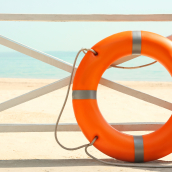

Keep up to date by subscribing to our newsletter Perspectives.


The General Court of the EU has confirmed the partial revocation of the Airbnb trademark for ‘advertising services’ (class 35), finding that a business promoting its own offerings does not constitute an ‘advertising service’ aimed at third parties – a key legal lesson for branding strategies.

The EUIPO has refused the attempt by the Piaggio Group, manufacturer of the iconic Vespa, to register a three-dimensional trademark representing the shape of a scooter. The failure of the 3D trademark registration illustrates once again the difficulty of protecting non-traditional trademarks.

What are geographical indications (GIs) and why do they matter? Inspired by his summer barbecue, Matteo Mariano explores some of the GIs that protect food and drinks.

After its patent rights expired, the owners of the iconic Rubik’s Cube attempted to use trademark registrations to extend its protection. After decades of disputes, its black and white trademark and now its colour trademark have been found invalid, as Volha Parfenchyk explains.

How distinct are the retail services of shops that offer only one brand's products (such as flagship stores) from those that sell products from multiple brands (such as department stores)? This was the question at the heart of the recent Rituals trademark class decision at the CJEU, as Sven Valstar explains.

The recent SKE v BB Crystal Bar trademark dispute in the UK emphasises the importance of robust and relevant evidence when seeking to establish goodwill, as Farhan Kazi explains.

From trade tariffs to changing import regulations, geopolitical uncertainty can cause many issues for international companies. At such times of change, intellectual property offers stability and protection, as Michaël Sumer explains.

The recent dispute over the Decathlon 'Easybreath' mask offers helpful clarity about the protection provided by EU design rights, says Florence Chapin. She dives into the ruling and the key takeaways for innovators.

From 1 December 2025, EU producers who make traditional products from a specific region can obtain the same legal status and protection as EU producers of agricultural products, wines and spirits. Volha Parfenchyk introduces the new EU protected Geographical Indication (GI), what it covers and the process of registration.

With 24 official languages and three official alphabets, considering linguistic diversity within the EU can be a real headache when assessing the risk of trademark confusion, as Louise Péchoux discusses in the context of the recent ruling on the Schweppes May Tea trademark by the EU General Court.
